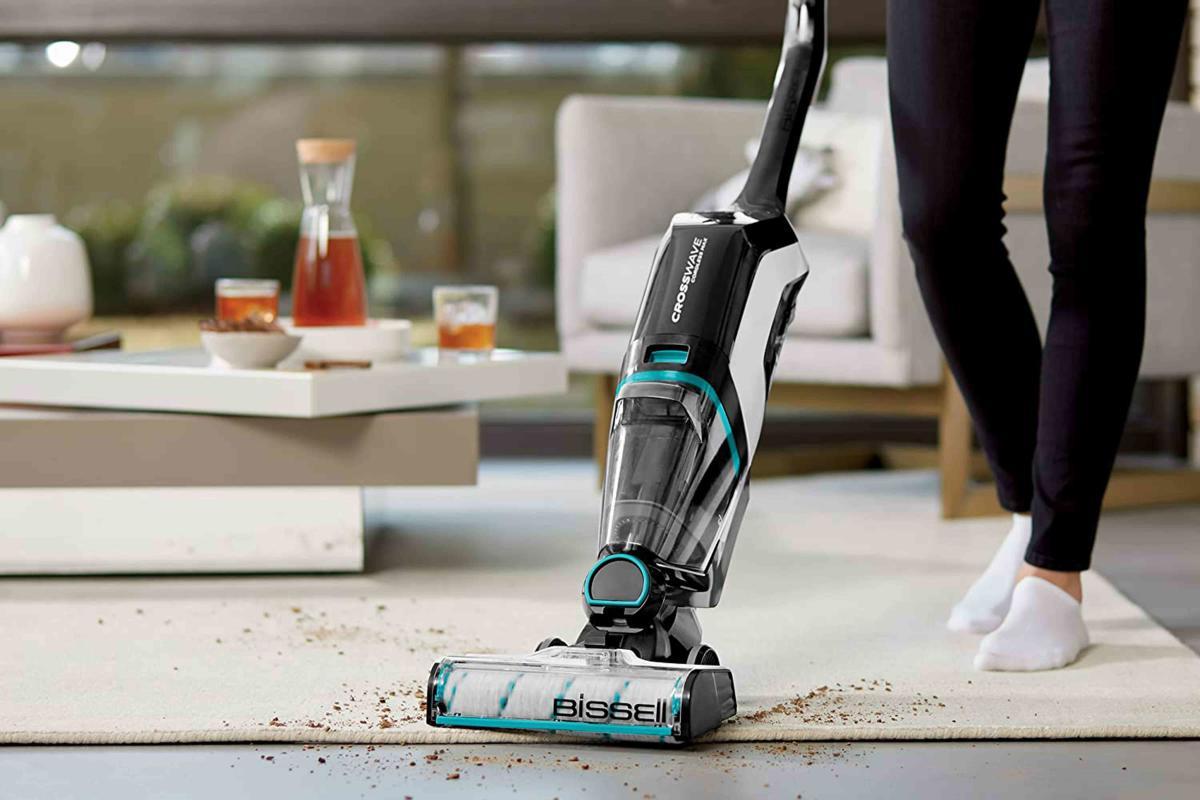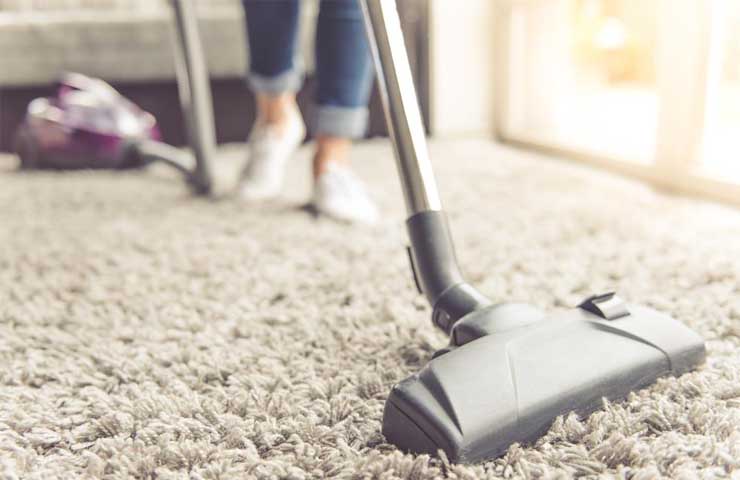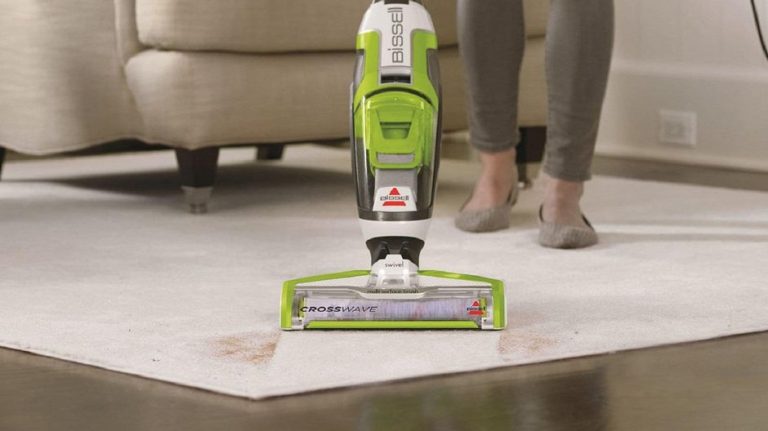Introduction
Can You Vacuum Wet Carpet – When faced with a wet carpet, it’s only natural to wonder about the best course of action. Should you reach for your trusty vacuum cleaner, or is it better to explore alternative methods of dealing with the moisture? This article delves into the intriguing question: Can you vacuum wet carpet? We will explore the potential risks, consequences, and expert recommendations surrounding this common dilemma.
Vacuuming wet carpet may seem like a convenient solution, especially if you’re accustomed to using your vacuum cleaner for regular dry cleaning tasks. However, it’s crucial to understand that wet carpet presents unique challenges that can impact both your carpet’s condition and the performance of your vacuum.
One of the primary concerns with vacuuming wet carpet is the potential damage it can cause to your vacuum cleaner. Most traditional vacuum cleaners are designed and optimized for dry cleaning tasks, equipped with motors, filters, and other components that are not built to withstand contact with moisture. Attempting to vacuum up water or dampness can lead to clogging, electrical issues, and even permanent damage to your beloved appliance.

Another significant risk associated with vacuuming wet carpet is the possibility of mold and mildew growth. Moisture trapped within the carpet fibers provides an ideal breeding ground for these harmful microorganisms. When you vacuum wet carpet, the moisture can be dispersed throughout the vacuum’s internal components, including the filter and dust collection bag. This can create a damp environment conducive to mold and mildew development, posing a health risk to you and potentially contaminating your vacuum.
Additionally, vacuuming wet carpet may not effectively remove all the moisture present. While your vacuum cleaner might extract some of the surface-level water, it is unlikely to reach deep into the carpet fibers where significant moisture can linger. Incomplete drying of the carpet can lead to long-term damage, such as carpet discoloration, unpleasant odors, and even structural issues like weakened backing or subfloor damage.
Considering these risks, experts generally advise against vacuuming wet carpet. Instead, alternative methods should be employed to effectively and safely address the moisture. These methods typically involve using specialized carpet extraction machines or employing absorbent materials like towels or fans to soak up excess water. It’s important to act quickly when dealing with wet carpet to prevent further damage and reduce the risk of mold growth.
Can you vacuum spilled water?
The vacuum cleaner is ideal for picking up dry dust, and wet spills and is ideal for heavy-duty jobs. However, it comes with the added advantage of cleaning wet spills and damp patches.
Yes, you can vacuum spilled water using a wet/dry vacuum cleaner. Wet/dry vacuums are specifically designed to handle both wet and dry materials, making them suitable for cleaning up liquid spills. These vacuums have a separate container or compartment for collecting liquid, preventing water from damaging the internal components.
When vacuuming spilled water, there are a few important considerations to keep in mind. First, ensure that the vacuum is designed for wet cleaning and has the necessary attachments. Most wet/dry vacuums come with specific attachments for liquid pickup, such as a squeegee nozzle or a wide-mouthed attachment.
Before starting, it’s crucial to unplug the vacuum to avoid any electrical hazards. Once the vacuum is ready, gently move the nozzle or attachment over the spilled water, making sure to cover the entire area. Slowly and steadily, the vacuum will suck up the water into the collection container. Take care not to overfill the container, as it may result in leakage or affect the vacuum’s performance.
After vacuuming, it’s essential to empty the liquid container and clean it thoroughly to prevent the growth of bacteria or mold. Additionally, ensure that the vacuum is completely dry before using it for dry materials again. Overall, using a wet/dry vacuum cleaner is an effective and convenient method for cleaning up spilled water, providing quick and efficient results.
How can I dry my carpet fast?
Open windows – air flow can help to improve drying times and opening windows can help, unless it is very humid outside. Use floor fans – running floor fans in areas with damp carpet will help to move the humid air created by evaporation out of the space, and dry the carpet more quickly.
To dry your carpet quickly, follow these steps:
Remove excess water: Start by blotting the wet areas with clean towels or paper towels to soak up as much water as possible. Apply gentle pressure and repeat until the towels no longer absorb moisture.
Increase airflow: Open windows and doors to improve ventilation and promote air circulation in the room. You can also use fans or dehumidifiers to enhance drying. Position fans to blow across the carpet, aiming for maximum airflow.
Utilize natural sunlight: If weather conditions permit, allow natural sunlight to enter the room. Sunlight helps in evaporating moisture and speeding up the drying process. However, be cautious if the carpet is colored, as direct sunlight may cause fading.
Use a wet/dry vacuum: If you have a wet/dry vacuum cleaner, use it to extract remaining moisture from the carpet. Run the vacuum over the damp areas multiple times until no more water is being extracted.
Apply baking soda or cornstarch: Sprinkle baking soda or cornstarch over the damp carpet. These absorbent substances can help in absorbing moisture and reducing odors. Allow them to sit for a few hours before vacuuming them up.
Seek professional assistance: If your carpet remains wet or if the water damage is extensive, it’s advisable to contact professional carpet cleaners. They have specialized equipment, such as industrial fans and dehumidifiers, to expedite the drying process and prevent mold growth.
Remember that the drying time can vary depending on factors like the extent of water damage, carpet thickness, humidity levels, and airflow. It’s crucial to address wet carpets promptly to prevent mold growth and minimize the risk of structural damage.
Can wet carpet be dried out?
Fortunately, the process is simple. Run a fan pointed at the wet area to help moisture evaporate. A dehumidifier also works to pull moisture out of the air and dry out the carpet. “Another option is to get rags and lay them over your damp area,” says Happy DIY Home founder Jen Stark.
Yes, wet carpets can be dried out. It’s important to address wet carpets promptly to prevent mold growth, structural damage, and the potential for health hazards. Here’s how you can dry out a wet carpet:
Remove water: Begin by removing excess water from the carpet. Use towels, mops, or a wet/dry vacuum to soak up as much moisture as possible. Blot gently and avoid rubbing to prevent pushing the water deeper into the carpet fibers.

Increase airflow: Improve ventilation and airflow in the room. Open windows, doors, and turn on fans to promote air circulation. You can also use dehumidifiers to reduce humidity levels, which aids in faster drying.
Elevate furniture: If there is furniture on the wet carpet, elevate it using blocks or foil to prevent further damage and allow air to circulate underneath.
Use fans and dehumidifiers: Position fans to blow air directly over the wet carpet. This helps in speeding up the evaporation process. Additionally, run dehumidifiers in the room to remove excess moisture from the air.
Steam clean or shampoo: If the water is from a clean source, you can steam clean or shampoo the carpet after it has dried to remove any residual moisture and potential odors.
Monitor progress: Check the carpet regularly to assess the drying progress. It may take anywhere from a few hours to a couple of days to completely dry, depending on the extent of saturation and environmental conditions.
If the carpet remains wet or if the water damage is extensive, it’s advisable to contact professional carpet cleaners who have specialized equipment to expedite the drying process and mitigate further damage. Remember that prompt action is crucial to prevent mold growth, so it’s important to address wet carpets as soon as possible.
How do you clean wet carpet?
Use Baking Soda to Remove Trapped Moisture
After you’ve absorbed the majority of water with towels, sprinkle baking soda over the wet areas and leave for around 30 minutes. Vacuum up any remaining baking soda and your carpets should be pretty fresh. Cleaning wet carpet requires a systematic approach to prevent further damage and ensure effective cleaning. Here are the steps to clean wet carpet:
Act quickly: Begin by removing any excess water from the carpet. Use towels, mops, or a wet/dry vacuum cleaner to soak up as much moisture as possible. Blot gently, avoiding vigorous rubbing.
Determine the water source: Identify the source of the water and take appropriate measures to stop it if it’s still ongoing. This prevents further saturation and damage to the carpet.
Assess the damage: Determine the extent of the water damage to evaluate if professional assistance is needed. If the water is contaminated or if the damage is significant, it’s best to contact a professional carpet cleaner.
Clean with a mild detergent: Mix a small amount of mild detergent with warm water. Dip a clean cloth or sponge into the solution and gently blot the affected areas of the carpet. Avoid scrubbing vigorously as it can damage the fibers. Rinse the cloth frequently and change the water as needed.
Rinse and extract: After cleaning, rinse the carpet by blotting with clean water or using a clean cloth dampened with water. Follow by using a wet/dry vacuum cleaner to extract the moisture from the carpet. Repeat this process until the water extracted is mostly clear.
Promote airflow and drying: Increase ventilation by opening windows, doors, and using fans or dehumidifiers to expedite the drying process. Ensure the carpet is completely dry to prevent mold growth.
Sanitize if necessary: If the water was contaminated (e.g., sewage backup), it’s essential to sanitize the carpet. Consult with professionals or use a disinfectant recommended for carpets.
Remember that the success of cleaning wet carpet depends on acting promptly, using gentle cleaning techniques, and ensuring thorough drying to prevent mold and mildew growth.
Can you use a vacuum on a wet floor?
If you are ever tempted to run the vacuum cleaner over a puddle of water, remember that you run the risk of electrocution and serious damage to the machine.
No, it is not advisable to use a regular vacuum cleaner on a wet floor. Regular vacuum cleaners are designed for dry cleaning purposes and are not equipped to handle liquid or moisture. Using a regular vacuum on a wet floor can pose safety risks and cause damage to the vacuum itself.
When water comes into contact with the internal components of a regular vacuum cleaner, it can lead to electrical hazards, such as short circuits or even electric shocks. Additionally, the moisture can damage the motor, filters, and other sensitive parts of the vacuum, rendering it inoperable.
If you need to clean a wet floor, it is recommended to use a wet/dry vacuum cleaner specifically designed for handling liquid spills. Wet/dry vacuums are equipped with specialized features, such as sealed motors and separate compartments for collecting liquid, which make them safe and effective for wet cleaning. Always prioritize safety and use the appropriate equipment for the task at hand to avoid damage to the vacuum and ensure your well-being.
Is it safe to use a regular vacuum cleaner on wet carpet?
No, it is not safe to use a regular vacuum cleaner on wet carpet. Regular vacuum cleaners are designed for dry cleaning and are not equipped to handle moisture or liquids. Using a regular vacuum on wet carpet can pose several safety risks and cause damage to the vacuum cleaner.
The primary concern is the potential for electrical hazards. Water is a conductor of electricity, and if it comes into contact with the electrical components of a regular vacuum, it can lead to electrical shock or short circuits. This poses a significant risk to the user.

Additionally, the internal parts of a regular vacuum cleaner, such as the motor, filters, and electrical connections, are not designed to withstand water or moisture. Introducing moisture to these components can result in damage, corrosion, and potentially render the vacuum inoperable.
To safely clean wet carpet, it is recommended to use a wet/dry vacuum cleaner specifically designed for handling liquids. These vacuum cleaners are built with safety features that prevent electrical hazards and have separate compartments or containers for collecting the liquid.
Using a wet/dry vacuum cleaner ensures effective cleaning of wet carpet without jeopardizing personal safety or damaging the equipment. It is important to prioritize safety and use the appropriate tools for each cleaning task to avoid accidents and protect the longevity of the vacuum cleaner.
What are the potential risks of using a regular vacuum on wet carpet?
Using a regular vacuum on wet carpet can pose several potential risks. Here are some of the risks associated with using a regular vacuum cleaner on wet carpet:
Electrical hazards: Water is a conductor of electricity, and when it comes into contact with the electrical components of a regular vacuum cleaner, it can lead to electrical shock or short circuits. This poses a significant risk to the user, potentially causing injury or even electrocution.
Vacuum damage: Regular vacuum cleaners are not designed to handle moisture or liquids. Introducing water to the internal components of a regular vacuum can cause damage to the motor, filters, electrical connections, and other sensitive parts. This can result in malfunctioning or permanent damage to the vacuum cleaner, requiring costly repairs or replacement.
Mold and mildew growth: If a regular vacuum is used on wet carpet, the moisture may not be adequately removed. This creates an ideal environment for mold and mildew growth. Mold and mildew can cause health issues and damage the carpet fibers, leading to the need for professional cleaning or replacement.
Decreased performance: Water can clog the filters and other parts of a regular vacuum cleaner, reducing its suction power and overall performance. This can result in inefficient cleaning and unsatisfactory results.
Voiding warranty: Using a regular vacuum on wet carpet goes against the manufacturer’s instructions and may void the warranty of the vacuum cleaner. Manufacturers typically specify that their vacuums are only intended for dry cleaning purposes.
To avoid these potential risks, it is essential to use a wet/dry vacuum cleaner specifically designed for handling liquids when cleaning wet carpet. Wet/dry vacuums have safety features and components that can handle moisture effectively without compromising safety or causing damage to the equipment.
What type of vacuum cleaner should be used to clean wet carpet effectively and safely?
To clean wet carpet effectively and safely, a wet/dry vacuum cleaner should be used. Wet/dry vacuums, also known as shop vacuums, are specifically designed to handle both wet and dry materials, including liquid spills and wet surfaces. Here’s why a wet/dry vacuum cleaner is suitable for cleaning wet carpet:
Water-resistant construction: Wet/dry vacuums are built with water-resistant or waterproof components, including sealed motors and electrical connections. This ensures safe operation even when vacuuming liquids or wet surfaces.
Separate collection container: Wet/dry vacuums have a separate container or compartment for collecting liquid, keeping it separate from the motor and other sensitive parts. This prevents water from reaching and damaging the internal components of the vacuum.
Specialized attachments: Wet/dry vacuums come with specific attachments designed for wet cleaning, such as squeegee nozzles or wide-mouthed attachments. These attachments help in effectively suctioning up water from the carpet without causing damage.
Powerful suction: Wet/dry vacuums typically have robust suction power, allowing them to efficiently extract water from the carpet fibers and prevent moisture from penetrating deep into the carpet padding.
Versatility: In addition to cleaning wet carpet, wet/dry vacuums can be used for a wide range of cleaning tasks, including dry debris, dust, and even unclogging sinks or drains.
When using a wet/dry vacuum to clean wet carpet, it’s important to follow the manufacturer’s instructions and safety guidelines. Empty and clean the liquid container after use to prevent bacterial growth, and ensure the vacuum is completely dry before using it for dry materials again. By using a wet/dry vacuum cleaner, you can effectively and safely clean wet carpet, minimizing the risk of damage, mold growth, and electrical hazards.
Conclusion
When it comes to the question of whether you can vacuum wet carpet, the answer is clear: it is generally not recommended. Vacuuming wet carpet can lead to damage to your vacuum cleaner, potential mold growth, and inadequate drying. The risks outweigh the convenience factor, and alternative methods should be employed to handle wet carpet effectively and safely.

To protect your vacuum cleaner, it’s best to refrain from using it on wet surfaces. Instead, consider using specialized carpet extraction machines or utilizing absorbent materials like towels or fans to remove excess moisture. Acting swiftly and addressing wet carpet promptly can help prevent further damage and mitigate the risk of mold and mildew growth. Remember, incomplete drying of wet carpet can have long-term consequences, including discoloration, odors, and structural issues. It’s essential to prioritize thorough drying to maintain the integrity of your carpet and prevent potential health hazards.
By following expert advice and employing appropriate drying techniques, you can ensure the longevity of your carpet and maintain a healthy living environment. Don’t compromise the well-being of your carpet or your vacuum cleaner by attempting to vacuum wet carpet. Instead, take the necessary steps to address the moisture effectively and protect your investment in both your carpet and your appliance.


